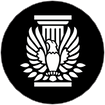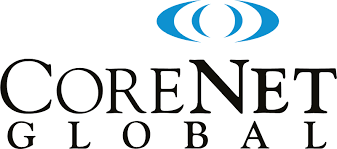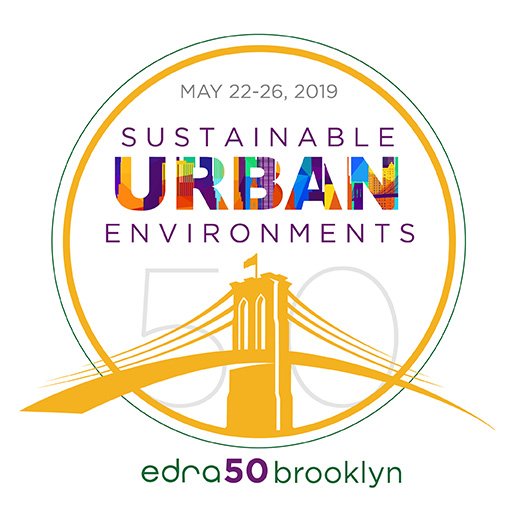Are you reading this in the dark?
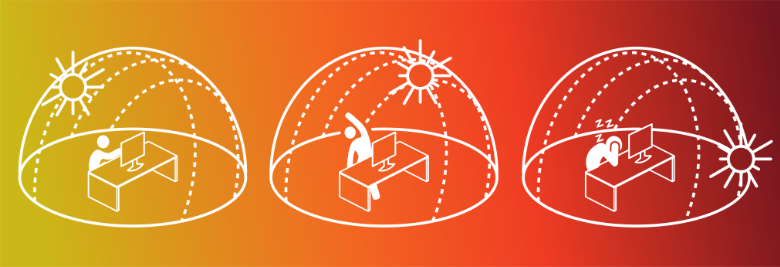
Making do with 4 hours of daylight
Feeling crunched for time? The days feel shorter because they are. If you think you’ve got it bad, residents of Reykjavik receive only four hours of daylight—a massive 17-hour swing from their summer solstice peak. Meanwhile, people in equatorial places like Bangkok get a much more consistent, twelve hours of sun year round. What does this mean for workplace? First of all, you would need to be outside in order to make the most of all that light. In this month’s "On Our Minds", we delve into the science of circadian rhythms.
If you still have some holiday shopping to do, check out our November newsletter.
On our minds
Sunrise...Sunset. The days certainly seem to fly swiftly this time of year! It’s not just because of the holiday season. We’re just a few days away from the winter solstice—the shortest day of the year in the Northern Hemisphere. Depending on where you live and how you get to work, you might leave and return home in total darkness! Good news for vampires, but not for the rest of us.
As much as we’d all like to think we can power through (and our jobs may require us to do so), mother nature has a say in the matter. The hard truth is that our bodies are affected by the seasons, and are particularly attuned to the rhythms of the sun. There’s even evidence that this effect goes all the way down to the chromosomal level—in essence, that our genes are literal clocks—the study of which earned one team of researchers the Nobel Prize in Medicine.
We may find that both our productivity and our well-being take a hit as the daytime hours dwindle. Far from being immune to the vagaries of fickle sunlight, our biological clocks make their presence known during the dark winter months. Many workplaces offer little relief. Old-school cube farms and even contemporary offices often place people deep inside buildings, far from windows. (Recent EPA research shows we spend less than 7% of our time out of doors.) Disconnection from that natural energy source causes us to seek artificial replacements in caffeine or snacks. That, coupled with disruption of our sleep, can cause or exacerbate many health problems. You might say: the fault lies not in our stars, but in our floorplates.
Thankfully, our friends at the GSA have published excellent research on how our well-being and performance at work can be affected by changes in light. We heard more at this year’s conference of the Academy of Neuroscience for Architecture (ANFA). In one fascinating experiment, researchers used bioelectric panels to vary not just the amount of light people were exposed to in the office, but also the hue.
It’s worth highlighting that the standardized system of time we live by, while it has obvious benefits, is a human creation designed to solve a business problem. It does not necessarily serve our health. Satchidananda Panda of the Salk Institute, succinctly described how the always-connected nature of our work lives may be bringing circadian rhythms to the fore: “We’re all shift workers now.” It’s time to treat workplace access to daylight as a public health issue. Indeed, it’s part of "Prospect," one of our Four P’s of Mental Health. Emails don’t sleep—but we still do.
Now, before you resign yourself to shaking a fist at the sky and cursing Helios for your growing to-do list, know that it’s possible to make the most of these shorter days. There are, of course, plenty of products and methods that optimize productivity. We’re fans of the Pomodoro Technique, ourselves. There’s also help to be found at 4-Hour Work Week, productivityist, and Getting Things Done. We’d be remiss not to mention a designer after our own hearts, Dave Seah, who offers
From the archives
‘Tis the season for a stroll down memory lane. We’re fondly remembering our work with Verizon on their coworking rollout, as they open yet another new space in Palo Alto this month.
As we are planning for PROOF, we considered last December’s AIANY event, In Pursuit of Performance: Financial and Social Metrics of Architectural Success, on the value of multisensory design and the many applications of behavioral research to the workplace.
While at Stok’s event in Denver this fall with leaders in corporate real estate, discussing the move toward human-centric design (one of several trends highlighted in their downloadable 2019 CRE Trendwatch report) we reminisced about the sustainability panel we did with Stok back in 2016. It was an engaging conversation about the value of biomimicry and holistic thinking in the way organizations are designed, both inside and out.
Last, but not least, it's the two-year anniversary of the PLASTARC newsletter! Check out our inaugural newsletter on workplace for the senses, or binge on a veritable buffet of workplace geek-outs in our archive of all 24 editions!
That’s about all we have time for this month. As we close the book on another year of doing what we love, we hope you’ll spare a few precious ticks of the clock to take stock of the good things in life, and all that lies ahead. We’d love to hear your 2019 resolutions. You can always reuse last year’s—maybe it’ll stick this time.
In Case You Missed It

Architects as Activists
Our AIANY committee facilitated this informational and inspirational conversation about the role we each play in building more equitable spaces.

No One Knows Change Like the Feds
After nearly two decades of work with the GSA, we're delighted to showcase some of their persistent thoughtfulness in this article for CoreNet.

MIT Sloan CFO Summit
Speakers—mostly CFOs—from a broad range of industries shared strategies for effective decision-making and management. Plus, another great program cover by Monderer Design.

Social Research, People Analytics, and the "Science of Delight"
Melissa Marsh spoke with the Workplace Innovator Podcast about measuring the brain, our workplace experiences, and even a bit about life on a sailboat.

ANFA 2018 Highlights
Writing for Work Design Magazine, we shared some of our top picks from this year's conference of the Academy of Neuroscience for Architecture.

WORKTECH Barcelona
We spoke about the design of education environments, pointing to strategies to encourage learning and development in any workplace.
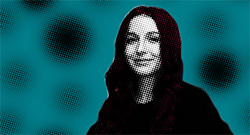
Samantha Norman joins the PLASTARC team
You may have noticed that we’ve been growing recently. As a Sociospatial Analyst, Samantha is already hard at work making spaces work better for our clients. Welcome aboard, Samantha!
Looking Ahead
As we prepare to bid a fond farewell to 2018, we’re already making big plans for next year. Join us at any (or all) of these opportunities to share the latest in workplace design and practices.


